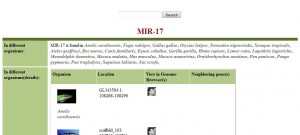
All About miRNAs
We have a small treat for those working on miRNAs.
Readers are likely wondering what we may have to add on miRNAs at this late hour given that thousands of papers have already been published on those tiny regulators. However, if you closely follow the developments in the field, you will notice that they went through three revolutionary phases.
In the first phase, miRNAs were completely new and researchers were busy figuring out what exactly they do and the molecular mechanism through which they operate. Quite a bit was learned about pri-miRNA, the precursor hairpin structure, and the mature 22-mer that worked as regulators of protein-coding genes. Enzymes such as Dicer and Drosha were discovered. Bioinformaticians got busy writing codes to predict hairpin folding and target-prediction.
In the meanwhile, many new eukaryotic genomes were sequenced and researchers started asking question about whether miRNAs existed in different branches of the tree of life. ‘Are they present in yeast?’ Do all insect genomes have miRNAs?’ ‘Does red algae Ectocarpus have miRNA?’
The most surprising discovery of this second phase, in our opinion, was the discovery of miRNAs in viral genome. From ScienceDaily (June 12, 2006) -
Researchers at the University of Pennsylvania School of Medicine have discovered part of the reason why cold sores, caused by a herpes virus, come back again and again. The new study, published online last month in Nature, points to a small RNA molecule, called a microRNA (miRNA) as the culprit that keeps the latent virus-infected cell alive. These findings could one day lead to a new way to fight the virus and offers the first target for intervention in the latent infection.
Here is a more recent article on viral miRNAs, if you like to know what has been learned about them since 2006.
At present, the miRNA field is in its third phase of growth and next-gen sequencing is the main driver. Today, the presence of miRNAs in genomes is as accepted as protein-coding genes, and the hairpin-folding mechanism is as well-known among biologists as genes translating into proteins guided by genetic code. However, the miRNAs are not just miRNAs any more, but known more as miR-20, miR-101, etc. - each with its own idiosyncrasy. What those different miRNAs do is the most important question keeping biologists awake.
Finding evolutionary relationship is one important tool in exploring different miRNA classes, because mature miRNAs are known to preserve their sequences over long evolutionary distance. This is where high-throughput sequencing has become very helpful. In the earlier days, researchers used to analyze individual genomes to find the presence of miRNAs in various organisms. Today, a researcher can potentially sequence miRNA libraries from many organisms together using high-throughput sequencing technology. Length of reads is not of big concern for those tiny RNAs.
Last week we were working on one such library, and short-listed a set of interesting miRNAs. Next we dived into miRbase to learn as much about them as possible. Here are the typical questions we asked for each miRNA (let us take miR-17 as an example):
(i) In which organisms is miR-17 present?
(ii) What is the evolutionary relationship between those organisms? For example, if a family of miRNAs is previously found only in worms and insects, and we find it in a bird, that is a new finding regarding the miRNA family.
(iii) How do mature miRNAs miR-17s from those organisms align?
(iv) Which genes are the neighbors of miR-17 in those various genomes? Also, we like to see miR-17 in the genomic context in genome browsers of those organisms. We suspect many miRNAs also preserve genomic synteny structure over long evolutionary distance (could anyone please refer to a paper on the topic)?
After jumping around from database to database, we got frustrated and decided to build the above questions into our search tool. The infrastructure is ready, and you can see miR-17 here. All fields are not complete yet, but you can see where it is going. The organisms are all grouped together according to their taxonomies.

The biggest challenge in developing something for the web is to make the codes flexible enough to incorporate changes in available data. For example, if we hand-curate the organisms and tomorrow miRBase incorporates data from 15 new organisms, we will need to get back to the drawing board. Our design is flexible so that new data can be easily incorporated. All that needs to be done is to populate the databases with latest information regarding various fields of the table (including neighboring genes).
We will keep you posted on further developments of the miRNA tool. Any helpful suggestion is welcome.